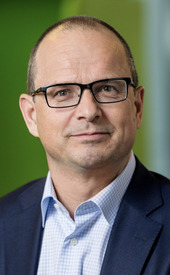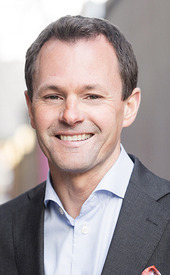
Impact investing: LP perspectives

Sofia Karadima investigates the increasing appetite for impact investing by speaking to three European LPs about how they define impact, their favoured measurement metrics, and the kinds of managers they look for
Participants:
- Carina Silberg, head of sustainability, and Peter Lööw, head of responsible investment, at Alecta (Swedish pension fund)
- Piet Klop, senior adviser for responsible investment at PGGM Investments (Dutch pension fund)
- Mark Mansley, CIO at Brunel Pension Partnership (pool of local government pension schemes based in England)
How do you define, and what are the characteristics of, impact investing?

Alecta: We are careful using the term "impact investing" due to the sliding scale of the definition. We mostly refer to these investments as "investments with measurable social and/or environmental impact" and often explicitly explain that these investments are expected to deliver social and/or environmental impact alongside financial returns.
PGGM: Impact investing is deliberately investing in companies, funds or projects that have measurable, positive social or environmental effects. We have embraced the Sustainable Development Goals as the most common way of slicing and dicing the world's troubles (and with that, the positive effects we'd like to quantify). We focus on SDGs 2, 3, 6, 7 and 12, and associated key performance indicators.
Brunel: We define impact investments as opportunities where the business strategy is built around delivering positive change in terms of sustainability, where a dual filter of both financial and impact metrics have been implemented and surpassed. Impact metrics must be measurable and material on an ongoing basis. We tend to find that the best impact investments are where the financial performance of the company or asset is inextricably linked to measurable positive impact, be it on the environment, societal outcomes, governance, or a combination. We define impact using the UN's sustainable development goals at a high level to classify investments.
Could you share examples of your recent impact investments?
Alecta: We have a portfolio of green bonds, which the issuer is required to report back impact on – we have, however, separated the green bond portfolio from other investments with measurable social or environmental impact when we communicate and disclose data. Our first experience of impact investment was $200m to the Emerging Market Loans Fund by Dutch FMO and NN Investment. The fund was developed to allocate financing to SMEs in emerging markets and allow development of clean energy solutions and socioeconomic growth.
How much have you allocated to impact investing within private markets so far? How much are you planning to allocate in 2020?
Alecta: We have SEK 10.7bn invested in impact investments. Most of that is done via issuers like IDA, EIB and the World Bank which could be considered public markets, with SEK 1bn in private markets. We have not set a volume target but aim to increase such investments and look for the opportunities that are a good fit with our investment approach, where scale is a critical aspect.

PGGM: We do not have a fixed allocation (as "impact" is a programme across asset classes, including listed equities and green bonds), but rather an impact target: €20bn by the end of 2020. We may or may not meet that target depending on impact investment opportunities that generate a market-rate return.
Brunel: Brunel has no defined impact targets (we do not believe in labels on tins, but on judging funds and managers on their individual merits on a case-by-case basis). Rather, Brunel is 100% committed to sustainable investing and as such to making impactful investments in support of all our corporate policies. We have not had client demand for a separate impact allocation, but they support us in identifying impact opportunities as part of wider portfolios, ensuring it isn't seen as niche but a core component of a well-diversified portfolio.
Is there a trade-off between impact investing and returns?
Alecta: With reference to the spectrum of defining impact investments – ranging from pure philanthropy to strictly market based, we are in the market rate return space. Every investment decision assesses the risk, risk adjusted returns and ESG – we believe we have found impact investments that meet our expectations and deliver value to our beneficiaries aligned with our fiduciary duty.
PGGM: No, there is none. As a fiduciary we cannot, and as an impact investor we do not want to trade off financial return for impact. We believe that big problems require scalable solutions, which in turn require financial viability. Hence, we look for investments where fiduciary requirements and impact desires overlap.

Brunel: No; done well, we do not believe there is a trade-off. On the contrary, we believe there is a growing body of evidence-based research that shows a strong positive correlation between sustainability and financial returns – most notably studies by Bain, DWS, NB and Capital Economics. However, all investments have to pass our financial screening – high impact is not an automatic pass to good returns.
How have conversations with GPs changed around impact investing over the last five years?
PGGM: Impact investing is increasingly becoming mainstream, as large private asset management platforms like KKR, Bain Capital and TPG have raised dedicated impact vehicles. Furthermore, we see generalist GPs increasingly institutionalising ESG, with dedicated professionals and policies regarding ESG.
Brunel: Immeasurably; most for the good, but some just for marketing. It is still vitally important to scratch beneath the surface. It is deeds not words or polices that matter, so track records, seed assets and proof of delivery are what really matter. Brunel's team continues to have positive discussions with all managers we meet, many of whom like the team's emphasis on sustainability and who want to work with us as a result.
What are you looking for when selecting a new manager when it comes to impact investing? Have the requirements changed from your side over the last few years?

Alecta: Alecta manages the majority of investments in-house, with limited external mandates. In the impact space, however, we have relied on external managers and then we look for like-minded managers in terms of cost control, long-term perspective on investments and relations, with consistent track records and with experiences that add value. We have not made any RFP on impact investment mandates.
PGGM: For private equity impact managers, we consider our standard manager selection criteria (performance, strategy, team, etc), and additionally their approach to impact creation/monitoring. While our fundamental risk-return requirements have not changed, we have devoted additional staff capacity to spend time with impact managers that were originally discarded at a first screening (for example, first-time teams, refinement in strategy, investing in earlier stages).
What are the challenges when it comes to embracing impact investing within private markets?
Alecta: The challenge is to assess risks due to poorer transparency and the often lack of track record. Also, finding investments of scale (our minimum ticket size is typically $100m) and to filter the many new asset managers that we are approached by.
PGGM: The scarcity of impact managers with a strong, proven track record and institutional scale. Additionally, there remains plenty of room for improvement and standardisation of impact measurement. We are wary of green-washing and now impact-washing – where investments purport to be impact but the link is tenuous at best and misleading at worst.
Brunel: The challenge is how to monitor and report on impact in a way that is material and can be aggregated at the level of the investment, the fund, and across funds/asset classes at the LP level. The level of resource required is large, so it tends to be larger managers that are best set up for impact measurement and reporting currently, but that's not to say smaller managers can't or aren't already doing this – although most of these smaller impact funds are thematically focused. Finally, one other challenge is finding managers with proven experience of delivery, with the depth of resources required.
How do organisations such as GIIN or UN PRI, along with regulations, support and drive change in impact investing?
Alecta: We look to these organisations and initiatives in terms of framework and knowledge, as it is important to make use of their experience. We were part of forming the Swedish National Advisory Board for Impact Investing (NAB), but we have taken a low-profile role as an observer. Institutions like ours are still new to this and cannot really offer any expertise – but we are interested and, by participating in the dialogue, hopefully we can help promote a pipeline of opportunities that meet our investment criteria while creating impact.
PGGM: They are great proponents of impact investing, and may force convergence in what counts as impact, and how impact should be counted. The Impact Management Project is another great initiative that frames impact in ways that are relevant and practical for fiduciaries (as opposed to mission-driven investors that can engage in return-impact trade-offs).
Brunel: Brunel is supportive of the Impact Management Project. Launched in 2016, it brings together GIIN, PRI, SASB and GRI, among others, and is seeking to develop a common framework, particularly on measurement and management of impact. It recognises the different degrees of impact and, like the new EU taxonomy for sustainable finance, is inclusive. It is still developing, but gives us something to work with. We strongly encourage all of our managers to be signatories of the UN PRI to demonstrate their commitment to responsible investing. Within real estate, we want to see our managers undertake GRESB Assessments, providing data on the ESG performance of their assets and portfolios. With regards to climate change, we endorse the disclosure recommendations established by TCFD.
This roundtable is an extract from Unquote's Impact Investing Report 2020, which can be downloaded in full here
Latest News
Stonehage Fleming raises USD 130m for largest fund to date, eyes 2024 programme
Sponsor acquired the public software group in July 2017 via the same-year vintage Partners Group Global Value 2017
Stonehage Fleming raises USD 130m for largest fund to date, eyes 2024 programme
Czech Republic-headquartered family office is targeting DACH and CEE region deals
Stonehage Fleming raises USD 130m for largest fund to date, eyes 2024 programme
Ex-Rocket Internet leader Bettina Curtze joins Swiss VC firm as partner and CFO
Stonehage Fleming raises USD 130m for largest fund to date, eyes 2024 programme
Estonia-registered VC could bolster LP base with fresh capital from funds-of-funds or pension funds









